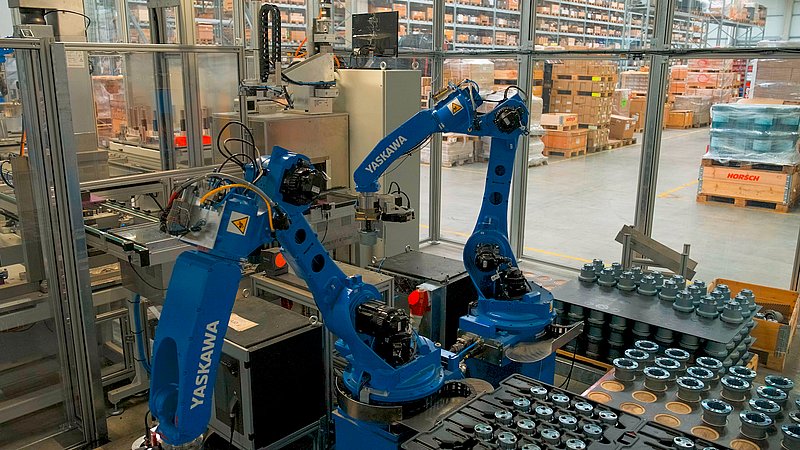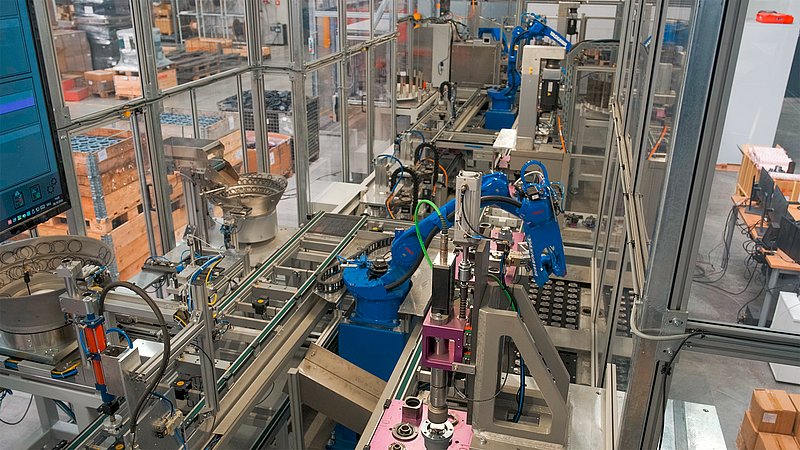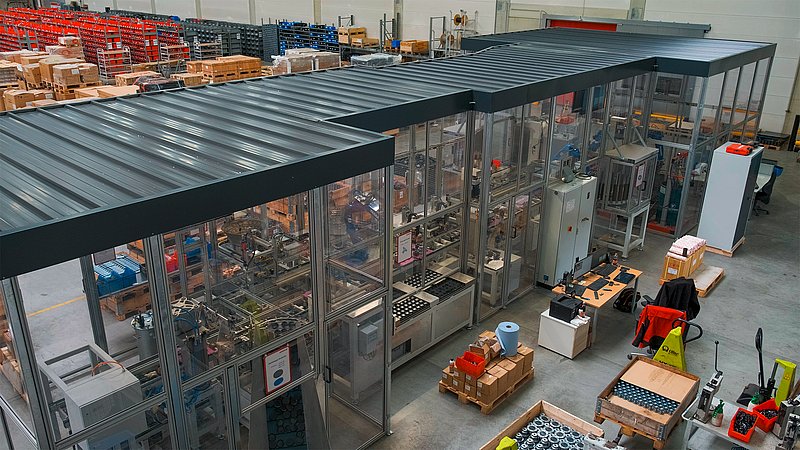Robot vs. handmade – the automation of an assembly line
In the production department at the site in Schwandorf there is a plant that automatedly assembles different bearing units for HORSCH machines. These units consist of a bearing, a shaft, a seal and the hub. The plant autonomously measures and assembles the bearing units. First the bearing is pressed into the hub, then the seal and after that the shaft. The plant was mounted and installed in autumn 2019 and has been started up at the beginning of 2020.

“However, it did not run smoothly right from the start”, the production management admits. “We needed time to familiarise with it. Quite a few things had to be readapted. It simply was new for us to automate an assembly line. But now everything is working as intended.”
The robot plant is designed for six different bearing units that are mounted in the HORSCH machines. As quite a large quantity is required, the plant has taken over this job. Two different bearing units are assembled: some are filled with oil, some with grease. This is why the sealing system is different.
The assembly of the units seems rather varied as 17 different shafts and nine different hubs are assembled. The difference, however, mainly is in the size, bearings, seals and in the number of fixing boreholes in the shaft and the hub. Despite different sealing systems a lot of assembly steps are identical so the advantages of an automation prevail. Originally, it took approx. six to eleven steps to assemble the bearings manually.

The automation also increases the quality standard. The plant is equipped with a measuring system that rejects faulty parts before the process starts. The plant monitors and documents all parameters of the individual assembly steps. This had not always been guaranteed when the process still was carried out manually. The automated processes guarantee a process and quality monitoring and improve the process time.

The quality characteristics of the parts also can be accessed at a later date. In case of service inquiries this allows for reading out the stored data to be able to analyse the processes afterwards. Currently one employee per shift controls and operates the plant. He also is responsible for equipping the plant and removing the finished parts.